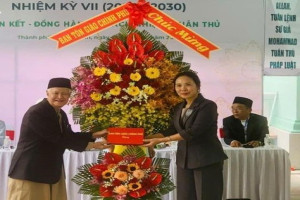
Experts trying to restore Afghanistan’s Buddhist treasures say it is like working on a 1,500-year-old puzzle.
In 2001, the Taliban destroyed Buddhist artifacts, many of which were one thousand years old or more. The artifacts include two huge statues of Buddha in Bamyan province. Many smaller artifacts found at Buddhist religious centers and kept in the national museum of Kabul also faced destruction.
After the Taliban government fell in 2001, the museum began repairing the artifacts from the country’s Buddhist history. The U.S.-supported project will try to reassemble thousands of pieces into statues within the next three years.
“It is very important (work) because it is actually restoration of our…identity, our past,” said Mohammad Fahim Rahimi. He is the director of the 100-year-old National Museum of Afghanistan.
“Buddhism was…here for more than 1,000 years. That’s a very large part of our history,” he added.
But since the Soviet invasion of the 1980s, Afghanistan has had nearly 40 years of war and much of the country’s art, artifacts and architecture has been destroyed.
Militias stole other pieces and sold them to international collectors illegally.
Sixty-two-year-old conservator Sherazuddin Saifi was working in the museum under the Taliban in 2001.
“They wanted us to tell them the number of antiquities and we ignored their request, but some days later they came and started breaking the antiquities,” said Saifi. He still works at the museum.
“These antiquities are the national treasure and the history of our country and show who lived in this country,” he added.
In a classroom at the museum, Afghan conservators work alongside experts from the University of Chicago’s Oriental Institute. U.S. assistance is important because Afghan conservators lack experience. They also lack the necessary chemicals and equipment needed for restoration work, Rahimi said.
Sometimes they can work from old photos that show the statues as they were before the destruction. In other cases, 3-D imaging and imagination are required to reassemble pieces of Buddha faces, hands and torsos.
A spokesman for the Taliban said the group has no plans to destroy national treasures in the future.
“All antique artifacts will be (kept) in their place,” spokesman Suhail Shaheen told Reuters. “They should be (kept) for the history and culture education of the upcoming generations.”
The possibility of bringing the Taliban in a power-sharing deal troubles Rahimi. He is looking at ways to move the artifacts if they are threatened again.
“We cannot let that happen again to our heritage,” he said.
Source: learningenglish.voanews.com




